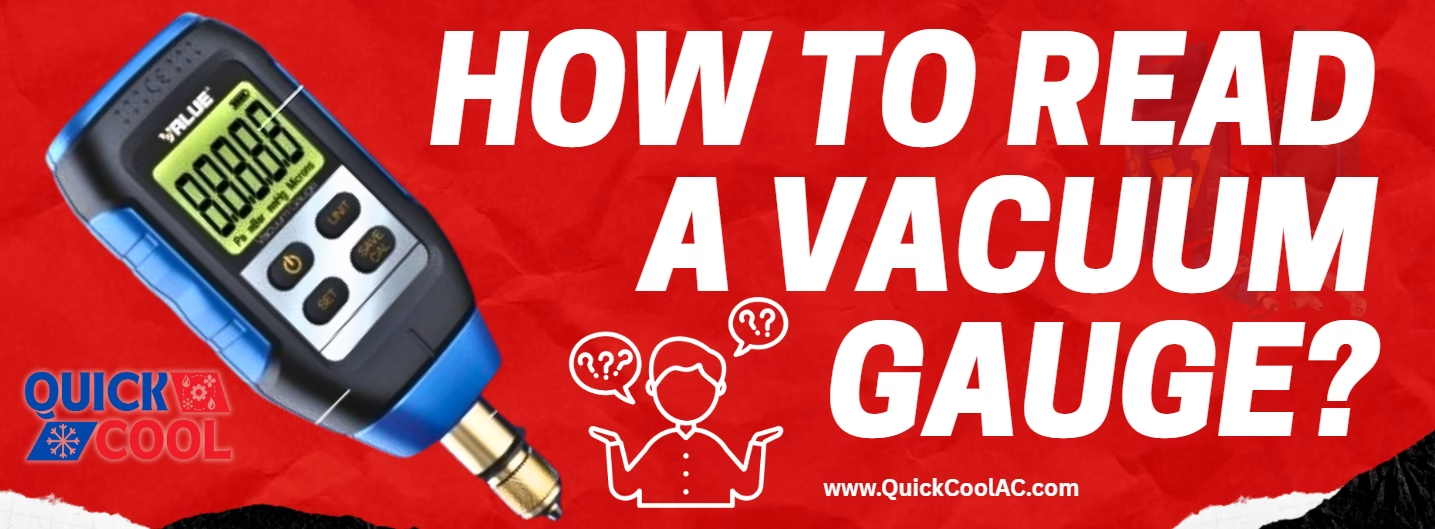For any HVAC technician in Abu Dhabi, Dubai, or across the UAE, achieving a deep vacuum is one of the most critical steps in a quality installation or repair. It’s the process that removes moisture and non-condensable gases from the system, ensuring efficiency, longevity, and reliable cooling power.
At the heart of this process is your vacuum gauge. If you’re using the VALUE VMV-1 or a similar model, understanding its readings is not just a skill—it’s a necessity. Misreading the gauge can lead to system failures, compressor damage, and costly callbacks.
How to Read a VALUE VMV-1 Vacuum Gauge | HVAC Guide for UAE Technicians
This guide will walk you through exactly how to read your VALUE VMV-1 vacuum gauge and interpret what it’s telling you about the health of the AC system you’re working on.
Why a Proper Vacuum is Non-Negotiable in the UAE Climate
The harsh Gulf climate makes AC systems work harder. Moisture inside a system is public enemy number one. When mixed with refrigerant and oil, it can form acids that corrode the compressor and other components. A proper vacuum, measured accurately with a tool like the VMV-1, is your best defense against:
- Reduced Cooling Capacity: Moisture can freeze at the expansion valve, restricting refrigerant flow.
- Compressor Failure: Acid formation from moisture attacks the motor windings.
- High Head Pressure: Non-condensable gases increase system pressure, forcing the compressor to overwork.
Using your VALUE VMV-1 correctly ensures your work stands up to the extreme heat of a UAE summer.
Step 1: Understanding the Gauge Face (The Micron Scale)
Before you even start the pump, you need to know what you’re looking at. The VALUE VMV-1 gauge typically has a prominent micron scale.
- What is a Micron? A micron (μm) is a unit of pressure equal to one-thousandth of a millimeter of mercury (mmHg). We use it to measure an extremely deep vacuum.
- The Key Range: For HVAC work, your primary focus will be on the fine-scale readings from 0 to 25,000 microns.
- Atmospheric Pressure: Is around 760,000 microns.
- Target Vacuum: For a clean, dry system, the goal is to reach and hold below 500 microns.
Step 2: The Step-by-Step Process to Read Your VMV-1 Gauge
Follow this procedure after you have connected your vacuum pump and the VMV-1 gauge to the AC system.
If the reading continues to rise steadily and does not stabilize, this indicates a leak or moisture is still boiling off (outgassing) inside the system. This is a fail.
Start the Vacuum Pump: Begin the evacuation process. The needle on the VMV-1 will start to drop rapidly from atmospheric pressure (760,000 microns).
Observe the Initial Drop: The gauge will quickly move through the coarse vacuum range (thousands of microns). This shows that the pump is pulling a vacuum and there are no major leaks.
Watch for the Slowdown: As the pressure drops below 5,000 microns, the descent will slow. This is where the real work of removing moisture (dehydration) begins.
Reach Deep Vacuum: Continue pumping until the needle stabilizes. Your target is a reading below 500 microns. The industry standard for a properly dehydrated system is often 500 microns or less.
The Decay Test (The Most Important Part): Once you hit your target (e.g., 300 microns), close the valve on your gauge to isolate the pump from the system. Watch the VMV-1 for at least 15 minutes.
If the reading holds steady or rises only slightly (e.g., to 400-500 microns) and then stabilizes, the system is tight and dry. This is a pass.
Step 3: Interpreting the Readings – What Your VALUE VMV-1 is Telling You
| Reading | What It Means | Action to Take |
|---|---|---|
| Rapid drop, then holds below 500 microns | Ideal Outcome. The system is leak-free and dry. | The system is ready for charging. Proceed with confidence. |
| Slow to pull down, struggles to reach 1000 microns | Likely a Large Leak or Wet System. The pump is fighting a continuous influx of air/moisture. | Stop. Check all your hose connections and core tools. If connections are tight, you have a leak in the system that must be found and repaired before continuing. |
| Reaches 500 microns, but rises rapidly during decay test | A Small Leak is Present. | Stop. A rising vacuum that doesn’t stabilize is a clear sign of a leak. Use nitrogen pressure and bubble solution or an electronic leak detector to find and fix the leak. |
| Reaches target, rises slowly, and then stabilizes | Minor Outgassing. A small amount of moisture was trapped in the oil and released. |
Pro Tips for Accurate Readings with Your VMV-1
- Use Short, Large Diameter Hoses: Long, narrow hoses have a higher internal volume and can trap moisture, slowing down the evacuation process and giving false readings.
- Keep the Gauge Calibrated: Like all precision instruments, your VALUE VMV-1 can drift over time. Regular calibration ensures you can trust the numbers you see.
- Isolate the Pump for the Decay Test: Always close the valve on your gauge manifold to isolate the pump. This tests only the AC system, not your pump and hoses.
Conclusion: Trust Your Gauge, Trust Your Work
The VALUE VMV-1 vacuum gauge is more than just a dial—it’s a diagnostic window into the AC system. Learning to read it correctly is what separates a good technician from a great one. By following this guide, you can ensure that every system you service in the UAE is clean, dry, and ready to deliver maximum cooling performance for years to come.
Need a Reliable Vacuum Gauge or Other HVAC Parts in the UAE?
At QuickCool, we stock quality tools and genuine parts, including the VALUE VMV-1 vacuum gauge, to support the high standards of HVAC professionals across Abu Dhabi, Dubai, and the entire UAE.
Browse our online store or contact us today for fast delivery on all your HVAC part needs!


 Condenser Fan Motors
Condenser Fan Motors Blower Motor Wheels
Blower Motor Wheels Dryer Filters and Stainer Filters
Dryer Filters and Stainer Filters
 Copper Coils
Copper Coils Contactor
Contactor
 Compressor Oil
Compressor Oil

 Indoor/Outdoor Motors
Indoor/Outdoor Motors Out Door Fan Blades
Out Door Fan Blades Heating Elements
Heating Elements


 Vacuum Machine Parts
Vacuum Machine Parts Vacuum Pumps
Vacuum Pumps Thermostat
Thermostat
 Refrigerator Compressor
Refrigerator Compressor Split AC
Split AC




